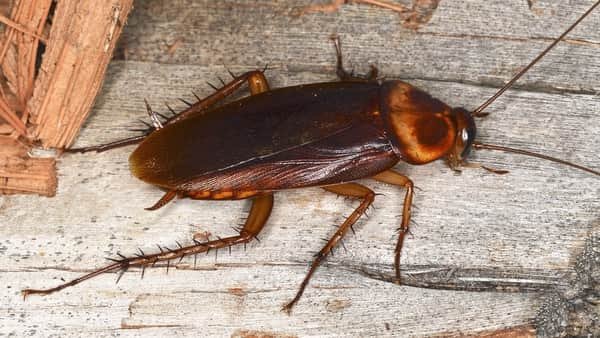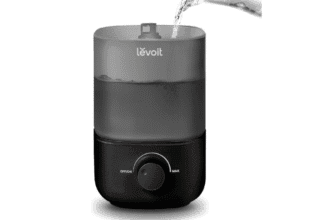Especially prevalent in the southeastern states, palmetto bug can be found all over the United States. These huge, brownish-red insects are notorious for their rapid scamper across the ground, the walls, and the ceilings. Though palmetto bug pose no immediate health risk to humans, many people find them to be a bothersome eyesore.
Here, we’ll go over the basics of palmetto bugs, such as what they are, where they like to live, and how to spot an infestation so you can have it treated before it gets out of hand. By using these measures, you can reduce the likelihood of encountering palmetto bugs at home and make life more pleasant for you and your loved ones.
Why Palmetto Bugs are So Common

Palmetto bugs are cockroaches that live in warm, humid climates, especially the Southeast. American, waterbug, and flying cockroaches are their names. Palmetto bugs are 1-1/2 inches long and reddish-brown. They fly short distances with wings.
Palmetto bug is pest because they like warm, humid places with food and water. In humid areas like basements, bathrooms, and kitchens, they infest homes, businesses, and other buildings. Palmetto bug like crumbs, spilled liquids, and garbage and are often found near food storage and preparation areas.
Palmetto bugs are pests because they reproduce quickly. Female palmetto bug can lay 16 egg capsules with 50 eggs each in their lifetime. These eggs hatch in weeks, and the nymphs can become adults in months. Palmetto bugs grow quickly due to their rapid reproductive cycle.
Palmetto bugs’ difficulty to eradicate makes them a common pest. They can survive harsh conditions and extreme temperatures. Palmetto bug can hide in small cracks and crevices.
Palmetto bug can also harm humans. They carry and spread pathogens like bacteria, viruses, and others. Cockroach allergen-sensitive people may develop allergies and asthma from them.
Their Behavior and Biology to Effectively Get Rid of Them
Effective pest control requires knowledge of the biology and habits of palmetto bugs. These are some essential details regarding the biology and habits of palmetto bugs that can be used to eradicate them:
- Palmetto bug love heat and humidity. Keep bathrooms, kitchens, and basements cold and dry to avoid pests.
- Palmetto bugs are nocturnal. They prefer wet basements, crawl areas, and plumbing fixtures. Fixing cracks and reducing hiding areas helps minimise palmetto bug numbers.
- Palmetto bug consume everything, even pet food, crumbs, and waste. Food storage and cleanliness can avoid infections by eliminating food sources.
- Palmetto bug reproduce rapidly, with females producing up to 16 egg cases. Frequent pest control and monitoring can catch and kill new palmetto bug generations before they can multiply.
- Palmetto bug can enter buildings through gaps, doors, and vents. Blocking these access sites helps prevent palmetto bugs from forming populations.
- Palmetto bugs are hard to get rid of since they can survive without food or water. Frequent pest control treatments that target hiding and breeding locations can reduce populations over time.
- Bright lights at night may attract palmetto bugs indoors. Yellow or amber outside lights and modest indoor lighting at night can lessen palmetto bug attraction to buildings.
Related: How to Get Rid of Ants without Harsh Chemicals
Palmetto Bugs Physical Appearance, Size, and Color
Palmetto bugs, sometimes known as American cockroaches or waterbugs, are huge cockroaches prevalent in warm, humid climates, especially in the Southeast. They look different from other cockroaches. Palmetto bug traits include:
1. Size
The adult size of a palmetto insect is about 1 to 1.5 inches in length. Women tend to be slightly larger than men.
2. Color
Bugs known as palmettos are a shiny, reddish-brown tint. Also, the plate-like structure that covers their head (the pronotum) may have a yellowish band around its edge.
3. Wings
Although they have wings and can fly a short distance, palmetto bugs are more at home on the ground. While not in use, their elongated wings are tucked neatly behind their backs.
4. Antennae
Palmetto bugs are distinguished by their antennae, which are longer than the rest of their bodies and are long and slender. The antennae help the animal locate food, mates, and danger.
5. Legs
The long, spiky legs of a palmetto insect make it well-suited for both running and climbing. Their legs are divided into two halves, the first of which is thick and spiky but the second of which is more pliable.
Differences Between Palmetto Bugs and Cockroaches
Palmetto bugs, often called the American cockroach or water bug, are a kind of cockroach. Although there are numerous similarities between palmetto bugs and other cockroach species, there are also some important distinctions. Some key distinctions are as follows:
1. Size
Palmetto bugs dwarf other cockroach species in size. Adults can be between 1 and 1.5 inches long, but other cockroach species, such the German variety, top out at around 0.5 inches at most.
2. Habitat
While other cockroach species, including the German and Oriental varieties, prefer warmer and dryer conditions, palmetto bugs are more at home in wet, humid settings like basements, sewers, and crawl spaces.
3. Flight
Palmetto bugs, unlike many other types of cockroaches, can fly for short distances.
4. Color
Some species, such as the German cockroach, are a lighter brown or tan colour, in contrast to the dark brown or black of palmetto bugs.
5. Life Cycle
As cockroaches go, palmetto bugs take their sweet time getting old. It takes them about 600 days to mature into adults, while it takes German cockroaches only about 100 days.
Behavior and Habitat
Where Palmetto Bugs are Usually Found and Their Favoured Locations
Palmetto bugs are tropical cockroaches found in Florida, Georgia, and South Carolina. They live in tropical and subtropical areas worldwide. Palmetto bugs prefer humid places like bathrooms, kitchens, and basements. They like dark, moist places like crawl spaces, tree holes, and under leaves and trash.
Food, moisture, and warmth attract palmetto bugs to homes and buildings. They live outdoors, especially in locations with lots of plants and organic debris. They inhabit urban parks, alleys, and other green spaces. As long as they have food, water, and shelter, palmetto bugs can thrive anywhere.
Palmetto Bug Feeding and Reproduction
Night-active palmetto bugs. They eat plants, decomposing organic debris, and other insects. They like rubbish, pet food, and other human stuff in cities.
Palmetto bug reproduce swiftly, making them hard to control. Females lay 30 eggs, which hatch in 50 days. Young palmetto bugs resemble adults but are smaller and lighter. They mature in 6–12 months after multiple molts.
Palmetto bug can tolerate harsh temperatures, insecticides, and hunger. They can fly short distances, making them hard to catch or kill.
Palmetto bugs are domestic pests, but they are useful in their natural environment. They recycle organic material and feed various predators, including birds and reptiles.
Remove palmetto bugs from your home as soon as feasible. This may include reducing food supplies, sealing cracks and holes, and employing insecticides.
Prevention
1. Tips for Preventing Palmetto Bugs from Entering Your Home
- Close up any outside gaps, especially those around windows, doors, and vents.
- Apply weather stripping to the frames of your windows and doors to keep the elements out.
Mesh screens can be installed on windows and doors to keep bugs out of your house. - Close off any gaps around your home’s plumbing, electrical outlets, and other potential entrance spots.
- It’s important to keep your yard in good shape, and that includes keeping trees and plants pruned back from the siding of your house.
- Palmetto bugs are attracted to light, so turning off outside lights can help.
The palmetto bug is drawn to humid areas, therefore lowering the humidity in your home can also assist to keep them away. Among the many methods for lowering humidity levels are:
- Make repairs to your home that have been harmed by water.
- To maintain a comfortable amount of humidity in your house, use a dehumidifier or air conditioner.
- Always keep the windows open or run the exhaust fans in the kitchen and bathroom to ensure enough ventilation.
- Palmetto bugs can be avoided by keeping a clean, clutter-free home.
2. Tips to Minimize the Risk of Infestations
- Maintaining a clean home by vacuuming the floor and carpets on a regular basis.
- Cleaning up the kitchen after use by wiping down surfaces and appliances.
- Avoiding wasting food by keeping it out on countertops and instead storing it in airtight containers.
- Having regular trash pickups and always closing the lids on trash cans.
- Moving firewood and other seasonal things inside the house.
- Debris and clutter can hide insects, therefore it’s important to clear them out of your home.
- Maintaining clean gutters will keep water from pooling and debris from clogging the system.
Treatment and Removal
1. Different Treatment Methods for Palmetto Bugs
For the treatment of palmetto bugs, a number of options exist.
A. Chemical Treatments
Palmetto bugs can be eradicated with insecticides, either by coming into touch with them or by poisoning the plants they eat. You can spray, bait, or dust these remedies on to your pests.
B. Non-Chemical Treatments
Diatomaceous earth, boric acid, and sticky traps are some of the many chemical-free methods that can be used to manage palmetto bugs. These techniques are effective because they kill or capture the insects.
C. Professional Pest Control
It may be necessary to employ a professional pest control firm to deal with a palmetto bug infestation if the problem has become serious or intractable. These businesses can use stronger insecticides and reach further into corners to eradicate pests.
2. Identifying the Source of the Infestation
If you want to get rid of palmetto bug, you need to find out where they’re coming from. If you suspect you have a pest problem, you should look for droppings, egg cases, and shed skins about your home. Treatments can be applied specifically to the region where the infestation originated, which will both eradicate the pests and stop them from spreading to other parts of the building.
3. Safely Removing Palmetto Bugs from Your Home
Removing palmetto bugs the right way will help you avoid an infestation and enjoy a more pleasant home environment. Here are a few suggestions for getting rid of palmetto bugs:
- A vacuum cleaner can be used to collect the bugs, and the bag can then be thrown away.
- Sticky traps, which can be put in regions where the insects are commonly found, can be used to catch them.
- Avoid having pests in your home by using a natural insect repellent like peppermint oil or vinegar.
- Preventing palmetto bugs from entering your home in the first place requires the use of physical barriers, such as mesh screens and weather stripping.







